Bahamian adventures: Columbus on the Niña and seagrass scientists on the R/V Calanus
Bill Dennison ·On May 11, replicas of two of the three ships that Christopher Columbus sailed across the Atlantic Ocean were at the Chesapeake Bay Maritime Museum in St. Michaels, Maryland. These replicas of the Niña and the Pinta were made using authentic materials and constructed with historically appropriate tools. The Columbus Foundation sails these ships to different port calls as "floating museums". They have stone ballast, wooden hulls, wooden masts and spars, a large wooden tiller, and the same rigging (square sails and lateen sails) as the original ship. Several allowances to modern navigation were made including running lights and a motor/propeller.

The current crew size composed of volunteers is much smaller than the crew used in Columbus' day when 24 crew were aboard the Niña and 26 crew were aboard the Pinta. There are no plans for a replica of the third ship in Columbus' fleet, the Santa María. The staff aboard the Niña and Pinta said that the Santa María was a) Columbus's least favorite ship, even though it was the 'flagship', b) was shipwrecked off the coast of Hispaniola, with the timber salvaged to construct a fort (La Navidad) and c) did not return to Europe, therefore there were no plans to produce a replica of this ship.
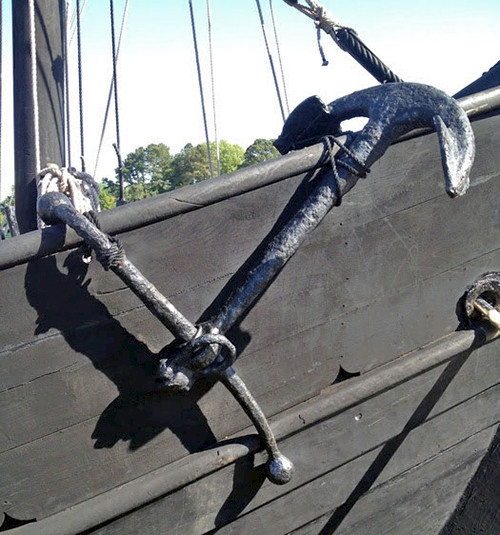
The Niña was Columbus' favorite ship and he lived aboard her for the better part of 8 years and logged over 25,000 sea miles. The replica Niña has a 6.8 feet draught and is 65 feet long. The Niña is rigged with both square sails and lateen sails in the manner of a Portuguese caravel. The fore and aft lateen sails gave the Niña the ability to beat to windward and not just sail downwind like the ships with only square sails. However, the crew indicated that the best the Niña could really do is a broad reach.
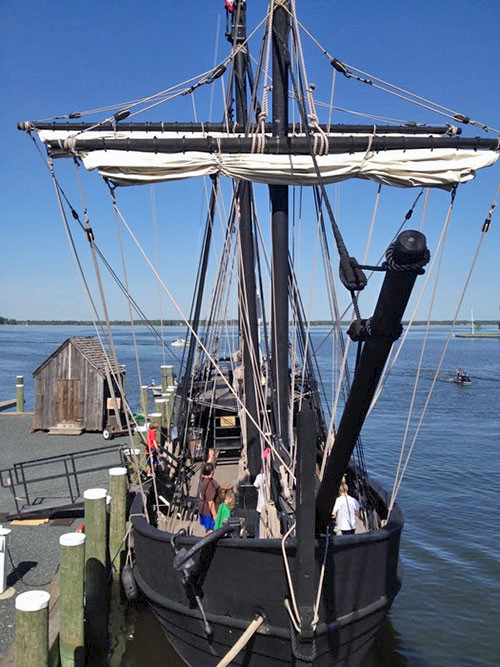
The size of the Niña was very similar to the R/V Calanus which was operated by the University of Miami. The R/V Calanus has since been retired from the research fleet. I was part of a scientific team which included Doug Capone, Fred Short, Mark Hines and Judy O'Neil. We joined the Calanus in Miami and sailed over the Bahamas banks to San Salvador Island (Watlings Island) in 1986 and 1987. San Salvador was where Columbus first landed in the new world on 12 October 1492. We conducted seagrass fertilization experiments in Grahams Harbour on the north end of San Salvador, and our ship was also 65 feet long and our draught was slightly less, 5 1/2 feet. We only had 8 scientists and two crew, however. Grahams Harbour was what Columbus reported would "hold all the ships of Christendom".
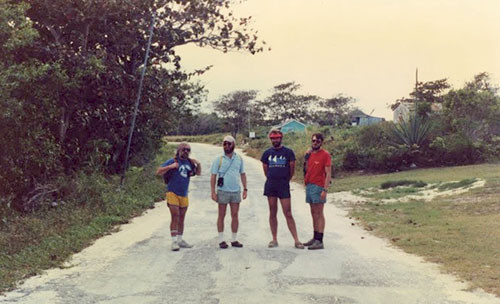
As a result of sailing in Bahamian waters nearly 500 years after Columbus, I have been interested in the nautical achievements of Christopher Columbus. His administrative and personnel management abilities were clearly lacking, but his nautical ability was impressive given the state of knowledge and technology during his lifetime. We found it was challenging enough to navigate a modern ship over the shallow waters of the Bahamas using modern navigational aids, so Columbus' achievements were nothing short of miraculous. It was nice to be able to walk around the Niña and gain a sense of one of the vessels that did so much to change the course of human history.

We had some wonderful experiences during our visits to San Salvador Island. We visited one of the last operating kerosene powered lighthouses which used an open tub of mercury to support the light and was operated by a 'mad-as-a-hatter' lighthouse keeper. We visited Don Gerace at the Bahamian Field Station which is now named the Gerace Research Centre. We met interesting people, including Bernie Storr who was the ship pilot, airport manager, band leader, logistics coordinator, in short, "The One to Know". We visited "Ed's First and Last Bar", danced at the Riding Rock Inn, and made a pilgrimage to the various Columbus monuments on the island.
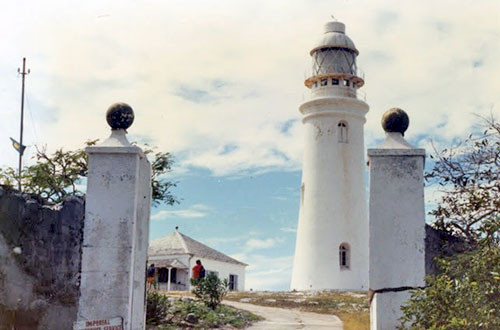
Our scientific study on seagrass nutrient relationships was located in San Salvador because of the lack of terrigenous runoff and calcium carbonate sediments. We used the R/V Calanus as our floating laboratory and hotel. We tested the hypothesis that phosphorus rather than nitrogen would be the limiting nutrient for seagrasses in carbonate environments using a series of fertilization experiments. Our results were quite dramatic, with phosphorus fertilization resulting in visibly enhanced growth. This discovery was quite novel at the time (published in 1990), but I must admit that Columbus had a bigger discovery in 1492.
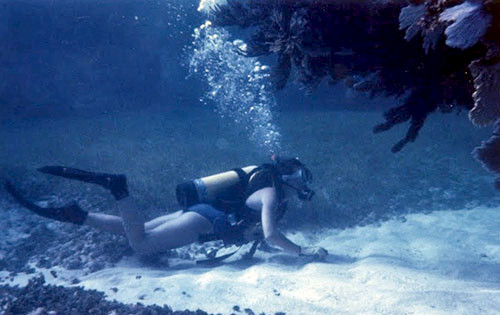
Patricia Kramer from Perigee Conservation is taking our Science Communication course in Cambridge, Maryland this week and we discussed the concept of developing some environmental report cards for the Bahamas and other Caribbean islands. So perhaps one day I will be able to revisit the Bahamas and contribute to their environmental management. Yesterday, CNN reported that underwater archeologist Barry Clifford may have discovered a cannon and other artifacts from the Santa María off present day Haiti. The Santa María was being steered by a cabin boy at the time of its grounding in December 1492.
Reference
Short, F.T., Dennison, W.C. & Capone, D.G. (1990). Phosphorus-Limited Growth of the Tropical Seagrass Syringodium-Filiforme in Carbonate Sediments. Marine Ecology-Progress Series 62(1-2), 169-174
About the author
Bill Dennison

Dr. Bill Dennison is a Professor of Marine Science and Vice President for Science Application at the University of Maryland Center for Environmental Science.

